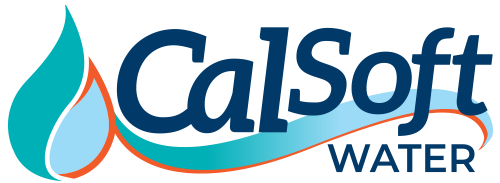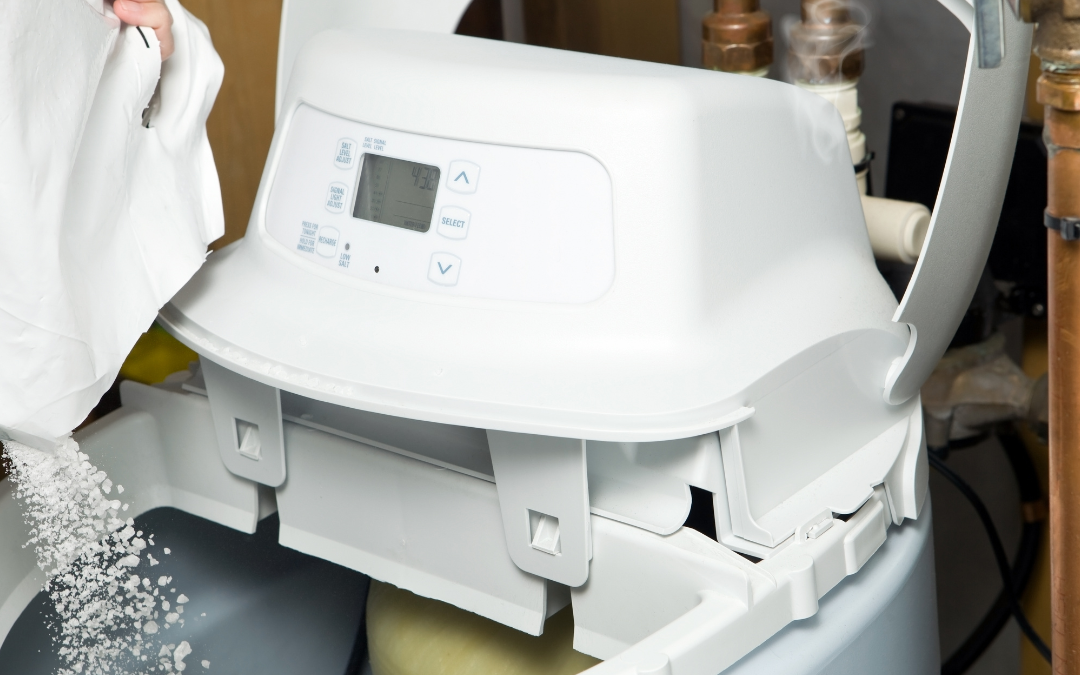Installing a whole-house water softening system can get expensive, and the DIY mistakes you might make trying to save a buck can get even more expensive. And like most machines, a salt-based water softener requires regular maintenance to operate at maximum efficiency. Although the hidden financial costs of salt-based water softeners may be small compared to the investment you’ve made in a quality soft water system, it’s important to note that salt-based water softeners will require a bit of time and attention.
Salt-based water softeners require sodium tablet refills
While a traditional whole-home water softening system can have many benefits, lugging a 40 pound bag into your home can get tiring. You may be thinking, “Why all this salt?” But water softeners need salt to complete the ion exchange process.
The ion exchange process softens the water by removing the minerals that make it hard, like calcium and magnesium. The salt in water softeners is used to replace the calcium and magnesium ions with sodium ions. During this process, a concentrated solution of salt forces the leftover calcium and magnesium to be flushed from the system and directly into the home’s wastewater system.
How often should you add salt to your water softener?
The amount of salt that you will need for your water softener will depend on how hard your water is and how much water you use. You should plan to add a bag of salt every month. For a family of four with standard water hardness, we recommend a 40 pound bag once a month. But it’s a good idea to check your brine filter to adjust the amount of salt if needed. In some cases, salt may only need to be added every 6 to 8 weeks.
How do you know when your water softener needs more salt?
Your water softener needs more salt if you check your brine tank and see signs of bridging or mushing. The salt in the brine tank can clump or cluster to appear like the tank is full, but you’re actually looking at a salt bridge. A salt bridge covers an empty space in your brine tank and if unaddressed, will result in ineffective water softening. If salt bridging is not the problem, the bottom of your tank might be clogged by salt mushing. Salt mushing will also keep your water softener from working properly.
Salt-based water softeners require a water softener cleanser
The same minerals found in hard water that clog your pipes and coat your appliances can leave residue on the valve and resin bed of your water softener. If the mineral buildup prevents proper flow, the water softener loses the ability to soften water. Salt-based water softeners will require a water softener cleanser to ensure your system is in good working order. Acid-based water softener cleansers work fast on mineral buildup or salt bridging or salt mushing. With a whole-home water softening system, it’s recommended that you use a water softener cleanser once or twice a year to retain the high quality of your water.
Salt-based water softeners may cause an increase in the water bill
Salt-based water softeners can result in a higher water bill due to the cycles of regeneration and flushing. Most water softening systems operate by routinely regenerating and flushing salt brine discharge into the wastewater supply. And the more minerals in your water, the more often your water softener system will need to regenerate. In this process, a water softener may discharge anywhere between 20 to 65 gallons of salty brine water into the wastewater supply. The increase in the water bill is generally negligible– a sharp jump in costs can indicate that your salt-based water softener has stopped working.
Ask about our environmentally friendly soft water delivery service
Everyone deserves clean, quality, softened water – but at what cost? Traditional salt-based water softeners can have many benefits, but the hidden costs can build up and make the water-softening process harder than it needs to be. The average salt-based water softener will require monthly refills of salt or sodium tablets, water softener cleanser, and more water use which may increase your water bill.
No hidden costs with portable exchange tanks
To enjoy soft water without the hassle or extra hidden costs, ask us about our portable exchange tank systems and soft water delivery service. Our soft water exchange tank service provides all the benefits of soft water but since the regeneration process takes place in our centralized facility, you don’t have to worry about disrupting the other systems in your home, such as your current water use, electricity use, or wastewater drainage.
No hassle with full-service soft water delivery
Our experienced technicians simply exchange your soft water tank when needed, so you can forget about lugging around that 40 pound bag of water softener salt! Our portable exchange tank service is also the most eco-friendly way to enjoy softened water. Soft water delivery service delivers all the benefits of soft water without any of the salt pollution, cleaning and maintenance, increased water bills, or environmental guilt. Ask how you can get your first month of soft water delivery service FREE!

